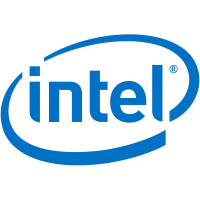Intel Pentium B925C vs Intel Celeron G4900T
Comparative analysis of Intel Pentium B925C and Intel Celeron G4900T processors for all known characteristics in the following categories: Essentials, Performance, Compatibility, Security & Reliability, Advanced Technologies, Virtualization, Memory, Graphics, Graphics interfaces, Graphics image quality, Graphics API support, Peripherals. Benchmark processor performance analysis: PassMark - Single thread mark, PassMark - CPU mark.
Differences
Reasons to consider the Intel Pentium B925C
- 2 more threads: 4 vs 2
- 2.3x lower typical power consumption: 15 Watt vs 35 Watt
| Number of threads | 4 vs 2 |
| Thermal Design Power (TDP) | 15 Watt vs 35 Watt |
Compare benchmarks
CPU 1: Intel Pentium B925C
CPU 2: Intel Celeron G4900T
| Name | Intel Pentium B925C | Intel Celeron G4900T |
|---|---|---|
| PassMark - Single thread mark | 1750 | |
| PassMark - CPU mark | 2252 |
Compare specifications (specs)
| Intel Pentium B925C | Intel Celeron G4900T | |
|---|---|---|
Essentials |
||
| Architecture codename | Gladden | Coffee Lake |
| Launch date | Q4'13 | Q2'18 |
| Place in performance rating | not rated | 1501 |
| Processor Number | B925C | G4900T |
| Series | Legacy Intel® Pentium® Processor | Intel® Celeron® Processor G Series |
| Status | Launched | Launched |
| Vertical segment | Embedded | Desktop |
Performance |
||
| Base frequency | 2.00 GHz | 2.90 GHz |
| Number of cores | 2 | 2 |
| Number of threads | 4 | 2 |
| 64 bit support | ||
| Bus Speed | 8 GT/s DMI3 | |
| Manufacturing process technology | 14 nm | |
| Maximum core temperature | 88°C | |
Compatibility |
||
| Low Halogen Options Available | ||
| Thermal Design Power (TDP) | 15 Watt | 35 Watt |
| Configurable TDP-down | 25 W | |
| Configurable TDP-down Frequency | 1.80 GHz | |
| Max number of CPUs in a configuration | 1 | |
| Package Size | 37.5mm x 37.5mm | |
| Sockets supported | FCLGA1151 | |
| Thermal Solution | PCG 2015A (35W) | |
Security & Reliability |
||
| Intel® Trusted Execution technology (TXT) | ||
| Execute Disable Bit (EDB) | ||
| Intel® Memory Protection Extensions (Intel® MPX) | ||
| Intel® OS Guard | ||
| Intel® Secure Key technology | ||
| Intel® Software Guard Extensions (Intel® SGX) | ||
| Secure Boot | ||
Advanced Technologies |
||
| Enhanced Intel SpeedStep® technology | ||
| Intel® Hyper-Threading technology | ||
| Idle States | ||
| Instruction set extensions | Intel® SSE4.1, Intel® SSE4.2 | |
| Intel 64 | ||
| Intel® AES New Instructions | ||
| Intel® Optane™ Memory Supported | ||
| Intel® Stable Image Platform Program (SIPP) | ||
| Intel® TSX-NI | ||
| Intel® Turbo Boost technology | ||
| Intel® vPro™ Platform Eligibility | ||
| Thermal Monitoring | ||
Virtualization |
||
| Intel® Virtualization Technology (VT-x) | ||
| Intel® Virtualization Technology for Directed I/O (VT-d) | ||
| Intel® VT-x with Extended Page Tables (EPT) | ||
Memory |
||
| Max memory channels | 2 | |
| Maximum memory bandwidth | 37.5 GB/s | |
| Maximum memory size | 64 GB | |
| Supported memory types | DDR4-2400 | |
Graphics |
||
| Device ID | 0x3E93 | |
| Graphics base frequency | 350 MHz | |
| Graphics max dynamic frequency | 1.00 GHz | |
| Intel® Clear Video HD technology | ||
| Intel® Clear Video technology | ||
| Intel® InTru™ 3D technology | ||
| Intel® Quick Sync Video | ||
| Max video memory | 64 GB | |
| Processor graphics | Intel® UHD Graphics 610 | |
Graphics interfaces |
||
| Number of displays supported | 3 | |
Graphics image quality |
||
| 4K resolution support | ||
| Max resolution over DisplayPort | 4096x2304@60Hz | |
| Max resolution over eDP | 4096x2304@60Hz | |
| Max resolution over HDMI 1.4 | 4096x2304@24Hz | |
Graphics API support |
||
| DirectX | 12 | |
| OpenGL | 4.5 | |
Peripherals |
||
| Max number of PCIe lanes | 16 | |
| PCI Express revision | 3.0 | |
| PCIe configurations | Up to 1x16, 2x8, 1x8+2x4 | |
| Scalability | 1S Only | |







